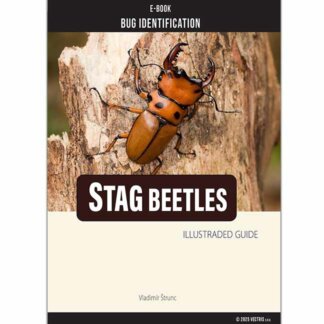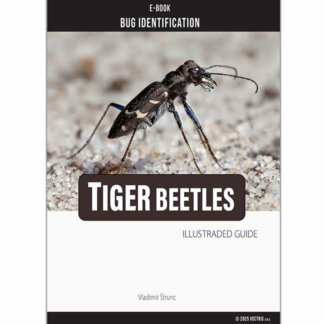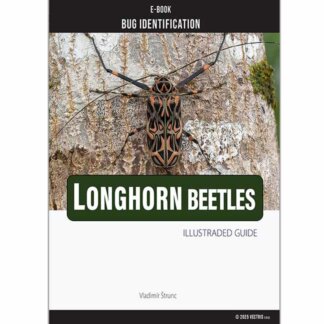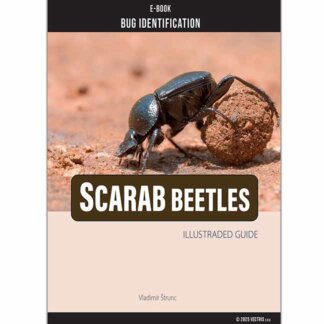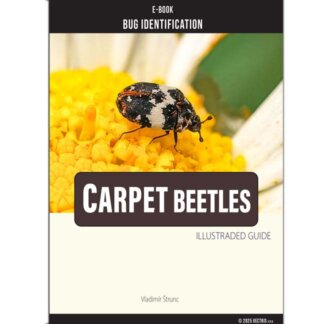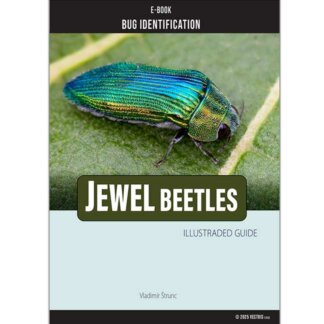Here is a list of various beetle species, highlighting their characteristics and habits:
Beetles
List of Bugs
Buy now. List of family Coleoptera
You can find here: Carabidae, Buprestidae, Cerambycidae, Cicindelidae, Scarabaeidae, Lucanidae, Chrysomelidae, Curculionidae, Staphylinidae
Books about Beetles
Unique pictorial atlases for identifying Beetles:
(2020) Tiger Beetles of the World, Cicindelidae, Illustrated guide to the genera
(2023) Tiger Beetles of Africa, Cicindelidae, Geographical guide to the family Cicindelidae
(2024) Tiger Beetles of Orient, Cicindelidae, Geographical guide to the family Cicindelidae
(2022) Ground Beetles of Africa, Afrotropical Region
(2022) Jewel Beetles of the World, Buprestidae, Illustrated guide to the Superfamily Buprestoidea
(2008) The Prionids of the World, Prioninae, Illustrated catalogue of the Beetles
(2010) The Prionids of the Neotropical region, Prioninae, Illustrated catalogue of the Beetles
List of Bugs
Stag Beetle
Identification: Large, dark shiny brown, big pincers.
Habits: Found on the ground or in rotting wood; attracted to lights.
Hercules Beetle
Identification: Very large, spotted, with “rhinoceros” horns.
Habits: Similar to stag beetles, found in southern regions.
Grapevine Chafer
Identification: Large, light brown with six dark spots.
Habits: Found on leaves; attracted to lights.
Ten-lined June Beetle
Identification: Large, dark brown with thin light lines.
Habits: Found in the western regions; buzzes when threatened.
Japanese Beetle
Identification: Shining copper and green; can fly.
Habits: Major pest of roses and other garden plants.
Ground Beetle
Identification: Various, usually black and elongated.
Habits: Very common; hides under rocks.
Tiger Beetle
Identification: Long legs, large pincers, usually patterned.
Habits: Found in bright sun on sandy or open ground; fast flyers.
Carrion Beetle
Identification: Large, flattened, marked with yellow or orange.
Habits: Life cycle involves dead animals.
Weevils
Identification: Various, usually small with a “snout.”
Habits: Found on plants; can be pests.
Sawyer Beetle
Identification: Often large, elongated, long antennae.
Habits: Found on tree trunks; attracted to lights.
Emerald Ash Borer
Identification: Small, elongated, dark shiny green.
Habits: Major pest of ash trees.
Whirligig Beetle
Identification: Shiny black, oval, long legs.
Habits: Whirls in groups on pond surfaces.
Carpet Beetle
Identification: Very small, rounded, gray pattern.
Habits: Pest of stored organic material.
Striped Cucumber Beetle
Identification: Small, “fat,” striped green and white.
Habits: Found in groups on cucurbits.
Eyed Click Beetle
Identification: Long, very flat, large eye markings.
Habits: Uncommon; found in the southern regions on wood.
Soldier Beetle
Identification: Orange, flies, resembles bees.
Habits: Found late summer on goldenrod.
Blister Beetle
Identification: Rounded, soft-bodied, blue-black or brightly colored.
Habits: Protected by blister-causing juices.
Ladybird Beetle (Ladybug)
Identification: Rounded, small, usually spotted.
Habits: Often found near aphid colonies.
Darkling Beetle
Identification: Many shapes and sizes, usually large and brown or black.
Habits: Often found on or around dead trees.
Click Beetle
Identification: Known for clicking sound when righting itself.
Habits: Larvae (wireworms) are destructive to root crops.
Longhorn Beetle
Identification: Antennae at least half the length of their bodies.
Habits: Feed on flowers, trees, and plants.
Jewel Beetle
Identification: Often large and colorful.
Habits: Some species bore into wood, common forest pest1.
Scarab Beetle
Identification: Includes dung beetles, June beetles, and Japanese beetles.
Habits: Diverse group with various feeding habits.



